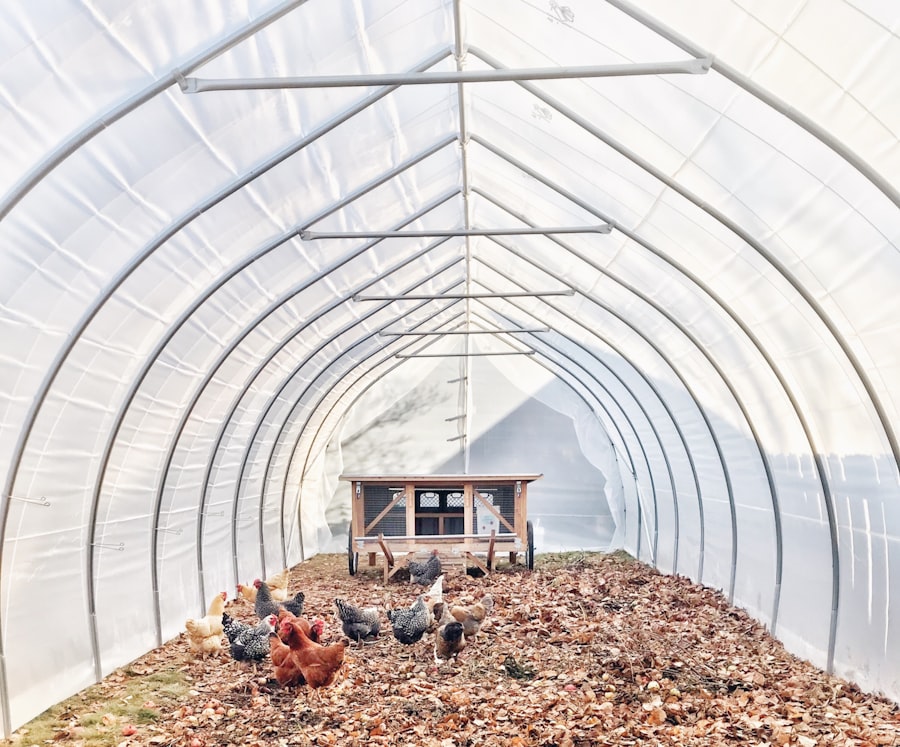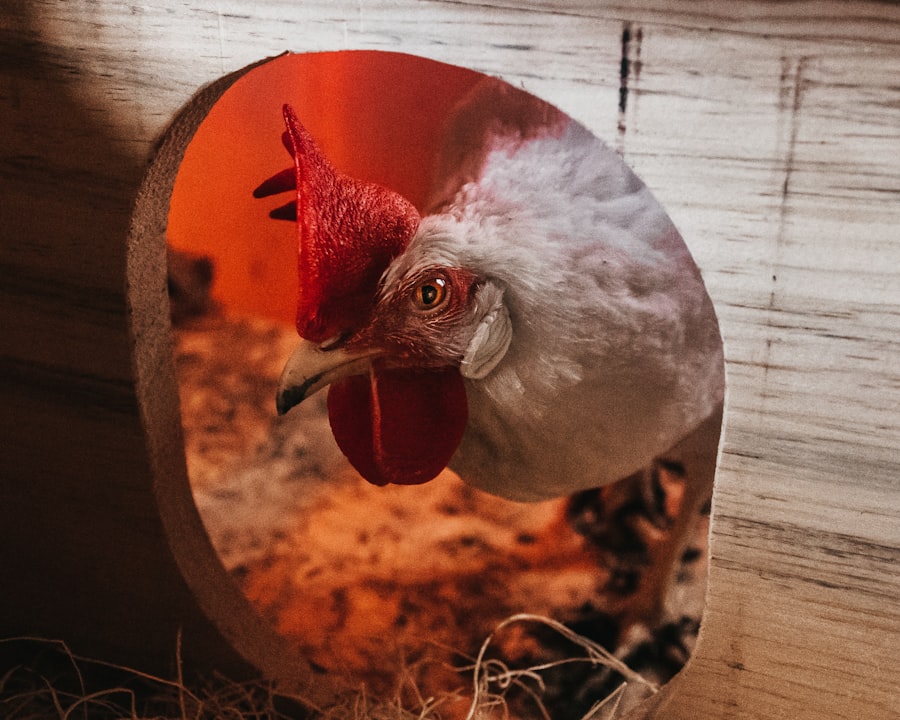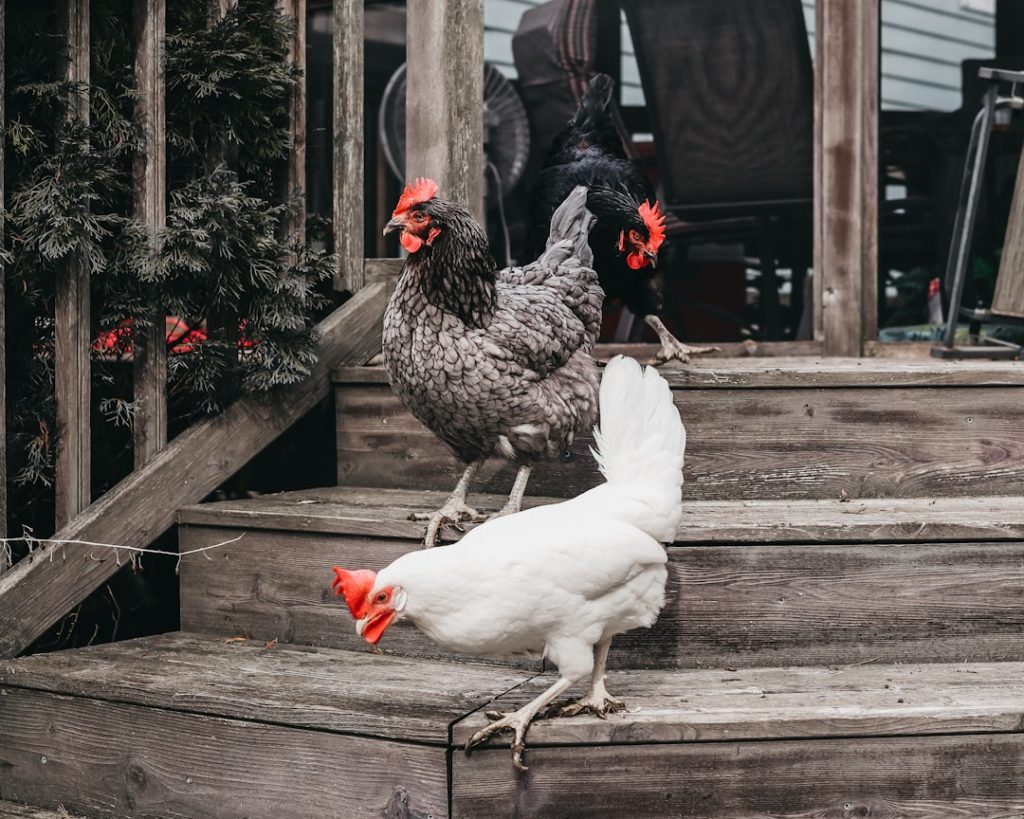When establishing a small chicken farm, several initial setup costs must be considered. The primary expense is the chicken coop or housing, which can range from a basic DIY structure to a more sophisticated pre-fabricated unit. The cost varies based on the size, materials, and complexity of the design, as well as the number of chickens to be housed.
Essential supplies include feeders, waterers, nesting boxes, and bedding material. The cost of these items depends on their quality and quantity. The initial setup expenses can fluctuate significantly based on the coop’s size and quality, as well as the chosen supplies.
The purchase of chickens is another crucial cost. Chicken prices vary according to breed and age, typically ranging from $5 to $20 per bird. Transportation costs may also apply if acquiring chickens from non-local sources.
In total, the initial setup costs for a small chicken farm can range from several hundred to over a thousand dollars, contingent on the operation’s scale and the quality of equipment and birds selected.
Table of Contents
Key Takeaways
- Initial setup costs include purchasing a coop, nesting boxes, feeders, waterers, and bedding, as well as fencing for a run area.
- Housing and coop expenses involve regular maintenance, repairs, and cleaning supplies for the coop and run area.
- Feed and water expenses include the cost of chicken feed, treats, and supplements, as well as water consumption.
- Health and veterinary care costs encompass vaccinations, deworming, and potential emergency medical expenses.
- Egg production and maintenance costs cover the expenses of collecting and cleaning eggs, as well as any additional lighting or heating needs.
- Miscellaneous expenses may include bedding, toys, and other supplies, as well as potential unexpected costs.
- The total annual cost of keeping 2 chickens can vary but is estimated to be around 0-0, depending on location and specific needs.
Housing and coop expenses
Bedding Material and Coop Maintenance
Once you have established your initial setup, you will need to consider the ongoing expenses associated with housing and maintaining your chickens. This includes the cost of bedding material, which will need to be replaced regularly to keep the coop clean and comfortable for your birds. Additionally, you will need to budget for regular maintenance and repairs to the coop, such as replacing worn-out roofing or repairing damaged fencing.
Heating and Lighting Expenses
These expenses can add up over time, so it’s important to budget accordingly. Another ongoing expense to consider is the cost of heating and lighting the coop, especially during the colder months. Depending on your climate and the size of your coop, this can add a significant amount to your monthly expenses.
Predator-Proofing Measures
You may also need to invest in predator-proofing measures such as fencing or netting to protect your chickens from potential threats. Overall, the housing and coop expenses for keeping chickens can vary widely depending on the size and condition of your coop, as well as the climate and location of your farm.
Feed and water expenses

One of the most significant ongoing expenses of keeping chickens is the cost of feed and water. Chickens require a balanced diet to stay healthy and produce eggs, so it’s important to budget for high-quality feed that meets their nutritional needs. This can include a mix of grains, seeds, and protein sources such as mealworms or pellets.
The cost of feed can vary depending on the type and quality of feed you choose, as well as the number of chickens you are feeding. In addition to feed, you will also need to budget for the cost of providing clean and fresh water for your chickens. This may include investing in automatic waterers or regular cleaning and maintenance of water containers.
Keep in mind that the amount of feed and water your chickens require can fluctuate based on factors such as age, breed, and environmental conditions. Overall, feed and water expenses are a significant ongoing cost of keeping chickens and should be factored into your monthly budget.
Health and veterinary care costs
Just like any other animal, chickens require regular health care to stay healthy and productive. This includes routine vaccinations and deworming treatments to prevent common diseases and parasites. Additionally, you may need to budget for occasional veterinary care if your chickens become ill or injured.
The cost of veterinary care for chickens can vary widely depending on the type of treatment needed and the availability of veterinary services in your area. In addition to veterinary care, you will also need to budget for basic health supplies such as first aid kits, vitamins, and supplements. It’s important to monitor your chickens regularly for signs of illness or injury and address any health concerns promptly to prevent more serious issues from developing.
Overall, health and veterinary care costs are an important aspect of keeping chickens and should be factored into your annual budget.
Egg production and maintenance costs
If you are keeping chickens primarily for egg production, it’s important to consider the costs associated with maintaining a healthy laying flock. This includes budgeting for additional feed and supplements to support egg production, as well as regular cleaning and maintenance of nesting boxes and egg collection areas. You may also need to invest in additional lighting or heating to encourage consistent egg laying, especially during the shorter days of winter.
In addition to these costs, you will also need to consider the expense of packaging and storing eggs if you plan to sell them commercially. This may include investing in egg cartons, labels, and refrigeration equipment to ensure that your eggs remain fresh and safe for consumption. Overall, egg production and maintenance costs can add up over time and should be factored into your annual budget.
Miscellaneous expenses

Maintenance and Equipment
These costs may include investing in tools and equipment for maintaining your farm, such as shovels, rakes, and wheelbarrows.
Pest Control and Protection
You may also need to budget for pest control measures, such as rodent traps or insecticides, to protect your chickens from potential threats.
Education and Marketing
Other miscellaneous expenses may include investing in educational resources or workshops to learn more about chicken care and farming practices. Additionally, you may need to budget for marketing and promotional materials if you plan to sell eggs or other chicken-related products locally. Overall, miscellaneous expenses can vary widely depending on your specific needs and goals for your chicken farm.
Total annual cost of keeping 2 chickens
When you add up all of the expenses associated with keeping chickens, it’s clear that there are several ongoing costs that should be factored into your annual budget. To give you an idea of what to expect, let’s break down the total annual cost of keeping 2 chickens: – Initial setup costs: $500 (including coop, supplies, and transportation)
– Housing and coop expenses: $300 (including bedding, maintenance, heating/lighting)
– Feed and water expenses: $400 (including high-quality feed and regular water supply)
– Health and veterinary care costs: $200 (including vaccinations, deworming, and basic health supplies)
– Egg production and maintenance costs: $150 (including additional feed/supplements for egg production)
– Miscellaneous expenses: $150 (including tools/equipment, pest control, educational resources) Based on these estimates, the total annual cost of keeping 2 chickens is approximately $1,700. Keep in mind that these costs can vary widely depending on factors such as location, climate, and specific needs of your flock.
It’s important to carefully consider these expenses when planning for your chicken farm and budget accordingly to ensure the health and well-being of your birds.
If you’re considering keeping chickens, you may also be interested in learning about how to insulate a chicken coop. Proper insulation can help keep your chickens comfortable and healthy, especially during the colder months. Check out this article for tips on how to effectively insulate your chicken coop.
FAQs
What are the initial costs of keeping 2 chickens?
The initial costs of keeping 2 chickens include purchasing a coop, feeders, waterers, bedding, and the chickens themselves. The total initial cost can range from $200 to $500, depending on the quality of the equipment and the breed of the chickens.
What are the ongoing costs of keeping 2 chickens?
The ongoing costs of keeping 2 chickens include purchasing chicken feed, bedding, and occasional veterinary care. On average, the monthly cost of keeping 2 chickens is around $20 to $30.
What are the additional costs of keeping 2 chickens?
Additional costs of keeping 2 chickens may include predator-proofing the coop and run, purchasing supplements or treats for the chickens, and any unexpected veterinary expenses.
Are there any cost-saving measures for keeping chickens?
Some cost-saving measures for keeping chickens include buying feed in bulk, using homemade or recycled materials for the coop and run, and practicing preventative health care to minimize veterinary expenses.
What are the benefits of keeping chickens despite the costs?
The benefits of keeping chickens include a fresh supply of eggs, natural pest control in the garden, and the enjoyment of caring for and observing the chickens. Additionally, chickens can be a sustainable and rewarding addition to a household or homestead.
Meet Walter, the feathered-friend fanatic of Florida! Nestled in the sunshine state, Walter struts through life with his feathered companions, clucking his way to happiness. With a coop that’s fancier than a five-star hotel, he’s the Don Juan of the chicken world. When he’s not teaching his hens to do the cha-cha, you’ll find him in a heated debate with his prized rooster, Sir Clucks-a-Lot. Walter’s poultry passion is no yolk; he’s the sunny-side-up guy you never knew you needed in your flock of friends!







